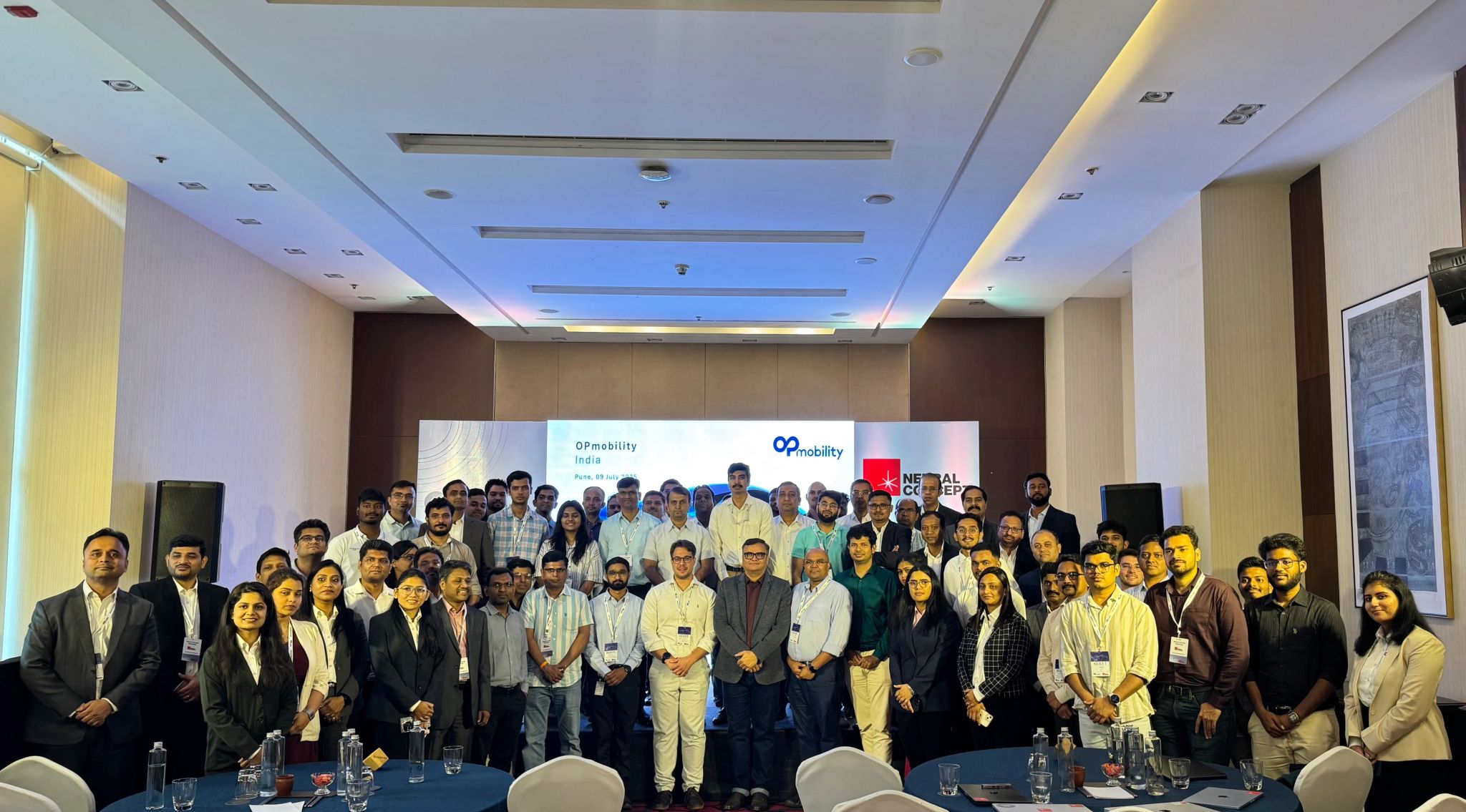Digital Twin in Automotive Industry: Transforming the Future
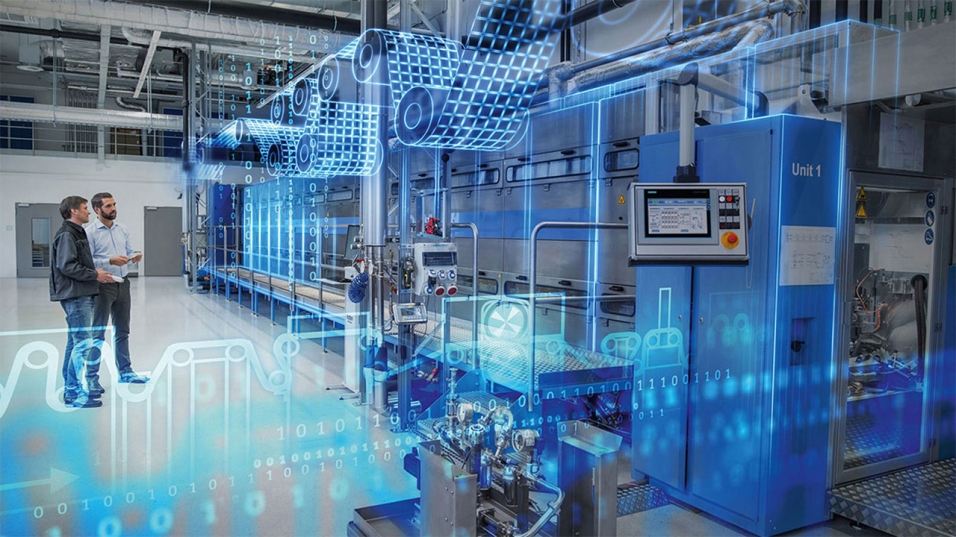
A digital twin is a virtual replica of physical systems that bridges the gap between the physical and digital worlds. Digital twins must mirror the properties and behaviors of their physical counterparts in various development processes. To this end, they utilize real-world data collections and leverage digital techniques, such as simulation and machine learning. The role of digital twins is to enable monitoring, analysis, and optimization without disrupting actual operations in the physical world of the factory.
The automotive industry is expected to face significant challenges during 2025. Supply chain disruptions impact production timelines, while material costs remain volatile. The mandated transition for the automotive sector to electric vehicles has accelerated software development, with many regions setting deadlines for phase-outs of internal combustion engines between 2030 and 2035. This shift necessitates fundamental redesigns of vehicle architectures and manufacturing processes. Additionally, semiconductor shortages persist, affecting everything from infotainment systems to advanced driver assistance technologies.
Implementing Industry 4.0 has become necessary for automotive companies. The fourth industrial revolution integrates cyber-physical systems, the Internet of Things, cloud computing, and cognitive computing throughout manufacturing. The digital twin model serves as a cornerstone of this transformation for software developers. Digital twin systems provide a continuous feedback loop between physical and virtual models in the virtual world.
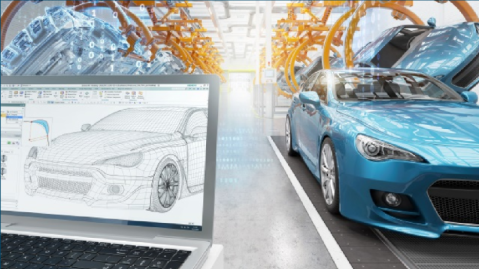
For OEMs, digital twins enable comprehensive vehicle development before physical prototypes exist. Engineers can simulate crash scenarios, aerodynamic performance, and thermal management within digital twins while identifying potential issues early in the design cycle. Digital twins monitor assembly lines in real time during production, predicting equipment failures before they occur and reducing costly downtime.
Tier 1 and 2 suppliers leverage digital twins to optimize component manufacturing. For example, a transmission supplier can create digital twins of its production line, virtually identifying bottlenecks and testing process improvements before implementation. Similarly, battery manufacturers use digital twins to predict cell performance degradation under various charging and temperature conditions, improving longevity and safety while reducing warranty claims.
The integration of digital twins throughout the automotive value chain enhances existing processes and fundamentally reimagines how vehicles are designed, manufactured, and maintained. This will position the industry to navigate its current challenges, including the risk of a user data breach, while building resilience for future disruptions.
Understanding Digital Twin Technology
In this section, we review the story of the digital twin concept and analyze its components, the virtual replica and the physical entity that digital twins mirror.
What is the Digital Twin?
Digital twins are dynamic virtual representation of a physical object, process, or system that accurately mirrors their real-world counterparts throughout their lifecycle.
The concept originated at NASA for space mission simulations. It was formally articulated by Dr. Michael Grieves at the University of Michigan in 2002 as part of discussions on product lifecycle management.
The term "digital twin" was later popularized by Gartner, who identified it as a top strategic technology trend in 2017. Gartner’s inclusion of digital twin based technologies in their 2017 "Hype Cycle for Emerging Technologies" brought significant attention to the term and its potential applications across various industries.
Digital twins differ from traditional simulations in that they continuously connect with their physical counterparts, enabling real-time data exchange, analysis, and feedback loops. As computational power and IoT technologies have advanced, digital twins have evolved from simple replicas to sophisticated systems incorporating artificial intelligence, machine learning, and predictive analytics.
Artificial Intelligence in the automotive industry will further enhance digital twins. AI models, trained on historical and real-time data from sensors, can detect subtle patterns that human operators would miss, such as shifts in equipment behavior, process drift, or rare fault conditions. These insights enable digital twins to anticipate potential failure modes and adjust process parameters autonomously for performance optimization.
Components of the Digital Twin
Digital twins pair a real-world object or system with a virtual model through continuous data exchange, enabling real-time monitoring, prediction, and optimization across various sectors, including healthcare, aerospace, urban planning, and manufacturing.
Digital Twin: Physical Entity
The physical entity can be a tangible object, system, or process in the real world. In healthcare, this might be a specific patient whose physiological parameters are continuously monitored through wearable devices.
For example, patients with cardiac conditions might wear ECG monitors that transmit heart rhythm data to their digital twin. In energy management, a physical entity could be a wind turbine farm, where each turbine is equipped with sensors measuring wind speed, blade pitch, power output, and mechanical stress.
Digital Twin: Digital Counterpart
The digital counterpart exists in virtual space and is a computational representation of the physical entity.
In aerospace, digital twins of jet engines incorporate detailed 3D models with physics-based simulations that can predict performance under various atmospheric conditions and flight patterns. These models integrate historical maintenance data and real-time sensor inputs to predict component failures before they occur.
In urban planning, digital twins of cities like Singapore incorporate buildings, transportation networks, and utility infrastructure, enabling planners to simulate traffic patterns, energy consumption, and emergency response scenarios despite potential data delay.
Digital Twin: Data Connections Between Physical and Digital Models
The bi-directional data flow between physical and digital entities forms the critical foundation of the digital twin concept.
In manufacturing, smart factories employ thousands of sensors that connect production equipment to its digital counterparts. These connections transmit operational data while receiving optimization commands generated through analysis of the virtual model.
In water management systems, sensors monitoring water quality, pressure, and flow rates throughout distribution networks feed data to digital twins that detect leaks, predict maintenance needs, and optimize chemical treatment processes.
The connection is both technical and temporal, maintaining historical data while providing real-time updates and predictive capabilities.
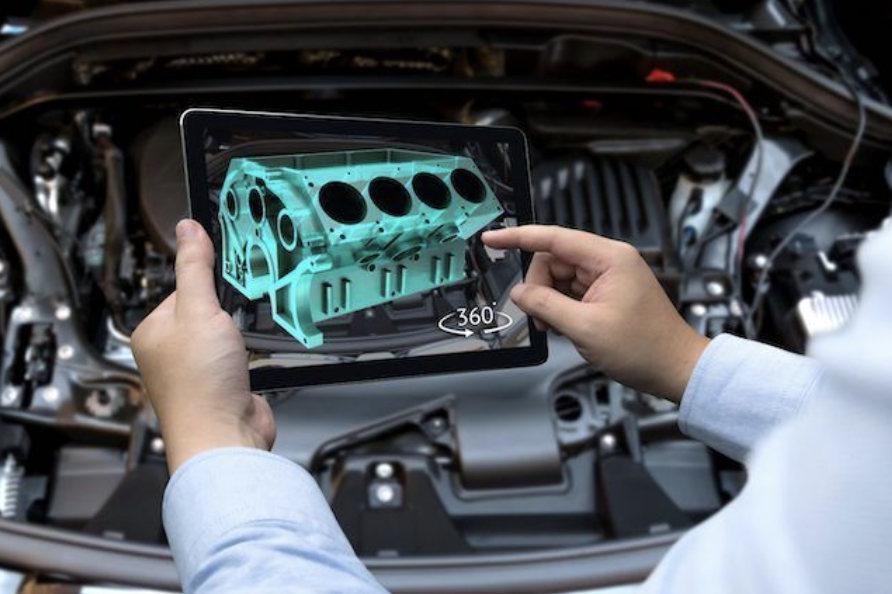
Applications of Digital Twin Technology in the Automotive Industry
Digital twins in automotive design and manufacturing enable real-time simulation, reduce prototyping costs, optimize production, and enhance predictive maintenance.
Vehicle Design and Prototyping
Digital twin technology offers the automotive industry virtual representations of vehicles, enabling real-time simulation and analysis. Simulation tools in the automotive industry can mirror an actual vehicle's physical and functional behavior, incorporating data from sensors, material properties, and dynamic performance parameters.
Vehicle data collected from sensors during real-world operation continuously feeds the digital twin, enabling engineers to validate assumptions, refine models, and adjust system parameters in real-time. This creates a feedback loop that enhances both virtual simulations and physical performance.
As a result, manufacturers can use virtual simulations to test designs before physical prototypes, evaluating aspects such as aerodynamics, thermal management, and crashworthiness under various conditions.
BMW Example
As an example of digital twin solutions in the automotive industry, BMW's digital twins simulate entire vehicle assemblies and optimize thermal flows in electric vehicle batteries without requiring physical test benches at early stages. Digital twin technology enables the rapid iteration and validation of complex subsystems, such as powertrains and advanced driver assistance systems (ADAS) algorithms. Thus, digital twins enhance the product lifecycle management of ADAS and AV systems by allowing continuous updates and improvements.
Market Analysis
By shifting much of the testing and validation into the virtual domain, companies can significantly reduce development time and costs.
A McKinsey study showed that "senior R&D leaders... have cut total development times by 20 to 50% for some users, reducing cost along the way."
According to a study by GlobeNewswire, the market value of digital twins in the automotive industry is predicted to reach $73.5 billion by 2027.
Manufacturing Process Optimization
Digital twins enable manufacturers to conduct virtual safety tests, such as crash simulations, improving vehicle safety while reducing the need for physical testing. Beyond product validation, digital twins play a fundamental role in simulating production processes to identify inefficiencies.
By creating dynamic virtual replicas of manufacturing lines, companies can model and analyze workflows, detect bottlenecks, and assess the impact of process modifications without disrupting actual operations.
BMW and NVIDIA
For instance, BMW employs a comprehensive digital twin of its Regensburg plant, utilizing NVIDIA’s Omniverse platform to simulate assembly line configurations and ergonomics, optimizing production sequences before physical implementation.
Siemens
Moreover, digital twins enable predictive maintenance of machinery, reducing downtime. With continuous monitoring of equipment through integrated data from sensors, these virtual models can proactively forecast potential failures and schedule maintenance.
Siemens, for example, integrates digital twins with AI algorithms to predict equipment malfunctions, enabling timely interventions that minimize unplanned outages and extend the lifespan of machinery.
This proactive approach enhances operational efficiency and contributes to cost savings by preventing unexpected breakdowns and optimizing maintenance schedules.
Benefits of Implementing Digital Twin Technology
Digital twin technology is a foundational tool in automotive engineering. It offers a scalable and data-driven framework that can optimize every phase of the vehicle lifecycle. From concept and design to production and after-sales service, digital twins enable decision-making across complex and distributed systems.
Improved Product Quality
By simulating the full behavior of vehicle systems under real-world conditions, digital twins allow engineers to detect design flaws and performance bottlenecks early in the development cycle. Thus, issue resolution is accelerated before physical prototypes are built, reducing costly design iterations.
Companies like Tesla use digital twins to continuously monitor vehicles, enhance performance, and inform maintenance needs.
These real-time data loops enable incremental updates and rapid validation of design choices, thereby improving the reliability and consistency of the final product.
Cost Reduction
Digital twins lower costs by reducing the dependence on expensive and time-consuming physical prototypes. By simulating vehicle performance across multiple operating conditions, development teams can iterate virtually and identify defects or inefficiencies before physical validation.
Additionally, the technology minimizes rework on the production floor by pre-validating manufacturing sequences. Digital twins facilitate enhanced supply chain management by providing real-time insights into inventory and logistics.
This results in better supplier coordination, streamlined material flow, and reduced overhead costs associated with delays or stockouts. Thus, digital twins provide a competitive edge in supply chain management by improving processing of orders and inventory management.
Enhanced Customer Satisfaction
Digital twins support mass customization by enabling the dynamic configuration of vehicle features according to individual customer preferences. From interface layouts to drivetrain tuning, options can be modeled, tested, and verified within the virtual environment before production. Dor instance, digital twins enhance sales by allowing customers to visualize how a product works and customize it on demand.
These models enable proactive diagnostics and predictive maintenance in the field, allowing OEMs to address faults before they impact the driver.
This not only improves reliability but also strengthens the post-sale service experience.
Better tracking of material sourcing, energy consumption, and lifecycle emissions for each configured vehicle also supports sustainability targets.
Sustainability
Digital twins enable engineers to simulate production systems in detail, revealing inefficiencies that are often difficult to detect once operations are underway. Virtual adjustments can be evaluated and validated before implementation, reducing the risk of disruption. When applied, these pre-tested changes result in more stable operations and tighter control over process variability on the factory floor.
For example, virtual models in battery pack assembly help balance cell performance variation and thermal management, ensuring tighter process control and minimal waste. Across the plant, resource consumption can be continuously monitored and adjusted in real time, supporting lean manufacturing practices without compromising output quality.
Challenges in Adopting Digital Twin Technology: Cybersecurity Concerns
Adopting digital twins exposes organizations to potential cyber threats. As these systems replicate real-world operations and often rely on live data streams, they become valuable targets for attackers aiming to disrupt processes or exfiltrate sensitive information. Therefore, breaching digital twin technology can lead to the retrieval of sensitive data and intellectual property, including proprietary models, operational insights, and design specifications.
Consequently, securing digital twins should be viewed as essential as their implementation. Without adequate protection, a digital twin that mirrors a critical asset can become a liability rather than an advantage. For this reason, implementing proper access controls can prevent unauthorized access to digital twins and cyber-physical systems, ensuring only trusted entities can interact with the model and its real-world counterpart.
Verifying data integrity is crucial to prevent attackers from sniffing data or injecting incorrect commands. Despite such controls, attackers may still attempt reconnaissance attacks involving packet and bandwidth sniffing to discover vulnerabilities in digital twin systems. If these are successful, they open the door to more aggressive threats.
One such escalation is data injection attacks. Data injection attacks involve sending malicious commands or false reports to digital twins to deceive the system.
In parallel, model corruption can occur if attackers inject malicious code into a digital twin’s model or its libraries, altering its behavior or undermining simulation integrity.
Therefore, it is critical to secure the twins’ software environment and dependencies throughout the lifecycle.
Attackers can introduce communication delays, disrupting synchronization between the physical and virtual twins.
Furthermore, digital twins can help organizations manage external data sources securely, thereby maintaining compliance with regulations such as GDPR. However, this benefit can only be realized if the twin is protected from unauthorized manipulation and data leakage at every integration point.
In summary, the sophistication of digital twins must be matched by equally robust cybersecurity measures, integrating access control, data integrity, and continuous monitoring to protect both digital assets and the real-world systems they represent.
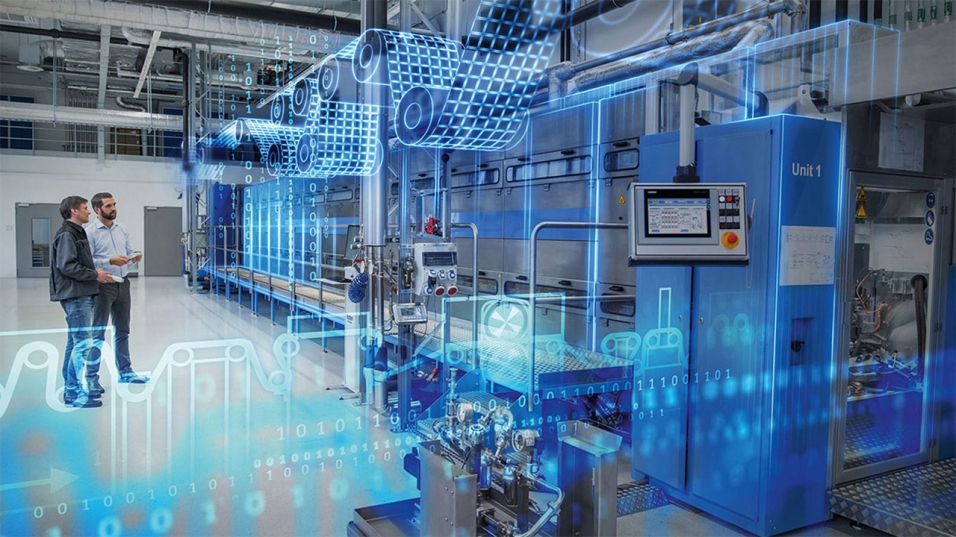
Case Studies
In the automotive manufacturing sector, digital twin technology connects physical production systems with virtual models, for real-time monitoring, simulation, and optimization. Major OEMs, such as JLR and GM, are utilizing digital twins to enhance product quality, reduce costs, facilitate the transition to electric vehicles, safeguard jobs, and bolster operational resilience.
Jaguar Land Rover's Halewood Plant Transformation
Jaguar Land Rover's Halewood facility has implemented digital twin technology. The digital transformation aligns with JLR's £15 billion investment in the Halewood plant, which is transforming the facility from ICE vehicle production to electric drive units for JLR's future EVs.
Digital twins create a virtual replica of the facility, integrating real-world sensor data throughout the manufacturing environment. Sensitivity feedback data can help conduct predictive maintenance, increasing equipment lifespan.
The transformation has preserved thousands of jobs at the Liverpool site and its associated suppliers, demonstrating how digital twin technology can support technical and workforce transitions in the automotive manufacturing industry.
The plant, which previously produced the Range Rover Evoque and Discovery Sport models, is now a key component in JLR's electrification strategy, which targets net-zero carbon emissions by 2039.
General Motors' Use of Digital Twins
General Motors (GM) employs digital twin technology.
In vehicle design, GM utilizes digital twins to simulate manufacturing processes, such as Gas Metal Arc Welding (GMAW), to predict and mitigate issues like weld distortion during the design phase. This approach enables the optimization of welding parameters and process sequences, thereby reducing the need for physical prototypes and enhancing production quality. Digital twins can generally help automotive manufacturers minimize product design time from a year to just one quarter.
In predictive maintenance, GM integrates digital twins with AI-driven analytics to monitor the condition of its manufacturing equipment and vehicles. GM can anticipate maintenance needs, minimize downtime, and enhance operational efficiency by analyzing real-time data from sensors.
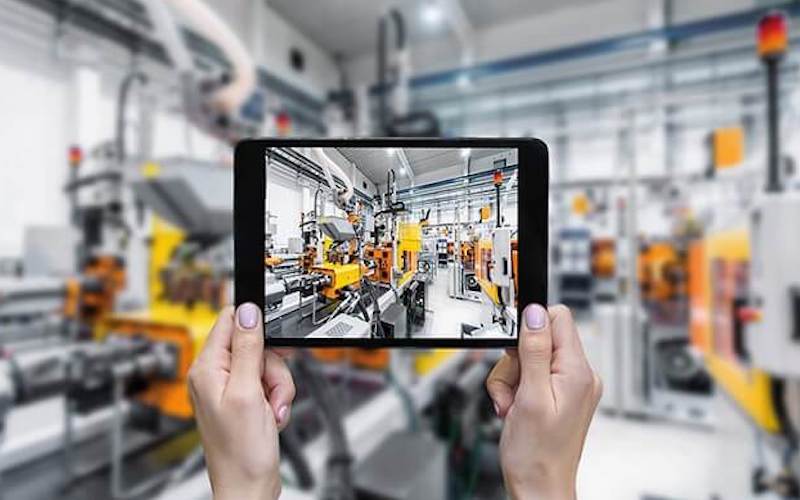
Digital Twins and the Digital Factory
Integrating Artificial Intelligence (AI), particularly Deep Learning (DL), into virtual factory environments enhances the capabilities of digital twins by enabling predictive analytics, adaptive control, and intelligent decision-making.
AI refers to the simulation of human intelligence processes by machines.
DL is a subset of AI that utilizes neural networks with multiple layers to model complex patterns in data. In manufacturing, DL algorithms can analyze vast amounts of data from sensors to detect anomalies, predict equipment failures, and optimize production schedules.
When combined with digital twin technology, generative AI helps prepare for scenarios that have yet to be captured in real-world data.
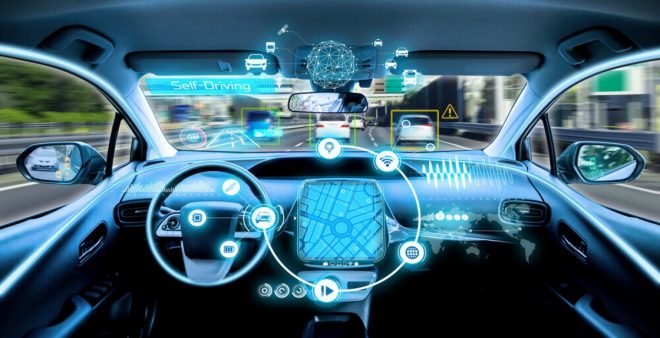
Expansion to Connected and Autonomous Vehicles
Expanding digital twin technology into connected and autonomous vehicles (CAVs) enables real-time simulation of traffic, weather, and infrastructure conditions to improve vehicle safety and efficiency. By integrating sensor data, vehicle telemetry, and AI models, digital twins support continuous system validation and adaptive control logic tuning.
Digital twins are crucial in testing autonomous vehicle systems. They enable simulations of complex scenarios that would be dangerous to recreate physically.
This approach accelerates development cycles while reducing reliance on costly physical testing, ensuring CAV systems can safely navigate edge cases and unpredictable real-world conditions before deployment.
Future Trends in the Automotive Industry
Future developments will integrate 3D Deep Learning to enhance spatial understanding of complex components and assembly environments. These models can improve accuracy in defect detection, assembly validation, and robotic path planning.
Additionally, digital twins will support sustainable automotive solutions by simulating and optimizing energy use, material selection, and end-of-life processes. This enables manufacturers to meet regulatory targets while minimizing environmental impact throughout the vehicle's lifecycle.
Conclusion
Let us succinctly summarize the insights we have gained thus far.
Digital twin technology is revolutionizing the field of automotive engineering by allowing for highly accurate simulations, continuous real-time monitoring, and sophisticated predictive analytics. This innovation extends its influence across all phases of product lifecycle development, from initial concept through to market delivery.
The implementation of digital twins shortens development cycles, reduces the need for costly physical prototypes, enhances manufacturing processes, and supports the industry's shift towards electric and autonomous vehicles.
As a result, major Original Equipment Manufacturers (OEMs) can now leverage this technology to maintain a competitive edge in a rapidly evolving and data-driven marketplace.
FAQ
How do digital twins differ from traditional automotive simulations?
Traditional simulations run predetermined scenarios in isolation. Digital twins maintain continuous connections with physical counterparts through real-time data exchange. The digital twin enables dynamic updating. It learns from actual conditions and provides feedback that influences the physical system.
Is digital twin technology only for large car manufacturers?
No. Major OEMs have widely adopted this technology. However, smaller suppliers are increasingly implementing targeted applications that focus on specific components or processes. Cloud-based platforms have reduced implementation costs, making the technology accessible to mid-sized and smaller companies throughout the supply chain.
Does Tesla use digital twin technology?
Tesla employs digitwins throughout its operations. Its manufacturing systems use digital replicas to optimize production lines. Vehicle development utilizes twins for modeling battery performance. Its shadow mode system creates twins of driver decisions to improve Autopilot functionality.
Who else is developing digital twins in the automotive industry?
For instance, Ford and Hyundai utilize digital twins to create virtual models of their production systems, enabling scenario simulations and workflow optimizations. On the software vendor side, Siemens offers digital twin solutions for automotive manufacturing, allowing the simulations to optimize vehicles before production. Dassault Systèmes delivers virtual twin experiences to the automotive industry through the 3DEXPERIENCE platform, enabling the modeling and simulation of entire environments to gain a deeper understanding of products and processes.
How do digital twins improve self-driving car safety?
Digital twins create virtual environments where autonomous vehicles can accumulate billions of test miles across countless scenarios impossible to replicate physically. They simulate edge cases, such as unusual traffic patterns or rare weather conditions, thereby accelerating validation while minimizing the risks associated with real-world testing.
What role does data analytics play in digital twin technology?
Data analytics forms the cognitive core of digital twins by transforming raw sensor inputs into actionable insights. Algorithms process historical and real-time data to identify patterns, predict failures, and optimize performance. They enable "what-if scenarios" that would be impossible with traditional analysis methods.
What is the difference between real-world data and simulated data?
Real-world data comes from direct measurements or sensors in physical environments, reflecting actual conditions with noise and variability. Simulated data is generated by models or algorithms that approximate reality based on assumptions and parameters. While simulated data is helpful for controlled experiments and predictions, it may lack the complexity and unpredictability of real-world data.
How can digital twins be used to enhance employee training and efficiency in manufacturing?
Manufacturers can train employees remotely using digital twins, which improves worker efficiency.



